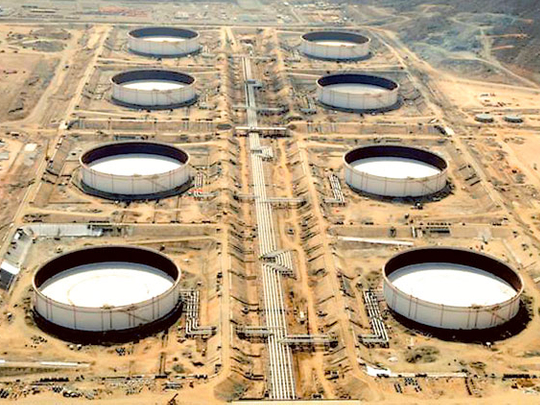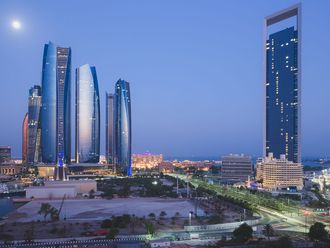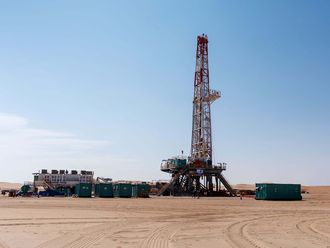
Abu Dhabi: In a move that mitigates Iran’s threat to block the strategic Strait of Hormuz, a water channel through which nearly a fifth of the world’s seaborne oil passes, the UAE today opened a new oil pipeline that gives its crude shipments direct access to the Indian Ocean.
A total of 500,000 barrels of oil to Pakistan was transported through the pipeline today, marking its inauguration. The 1.5 million-barrel-per-day crude oil pipeline runs from Habshan in Abu Dhabi to Fujairah.
“This is a very strategic project, it gives the options to our clients to transport larger quantities [of oil],” UAE’s Minister for Energy Mohammad Bin Dha’en Al Hameli said. “I consider this project to be complementary, so we have an alternative...to give us choice to have more than one trade route.”
The 370-kilometre Habshan-Fujairah pipeline is a game changer as it provides the UAE with an option to bypass the Strait of Hormuz for oil shipments should there be any problem in that water channel.
“By the end of the year, this 1.5 million-barrels-per-day pipeline will be fully operational, which is almost 70 per cent of the UAE’s crude,” International Petroleum Investment Company’s (Ipic) managing director Khadim Abdullah Al Qubaisi said. He said building of the pipeline cost $4.2 billion (Dh15.43 billion). The Habshan-Fujairah pipeline is owned by Ipic, an investment arm of the government of Abu Dhabi.
Sanctions
A European Union (EU) ban on Iranian crude imports came into effect on July 1 and Iran has been intensifying its threats to disrupt oil shipments from the Gulf. Two Iranian military officials warned over the weekend that Iran could stop oil from sailing through the vital shipping lane.
The new pipeline can carry three-quarters of the UAE’s oil exports if needed. Until now, the UAE, like Qatar and Kuwait, had been entirely dependent on Hormuz to export its crude and the pipeline ends its dependence on a shipping artery that Iran has increasingly threatened to block as Western sanctions on its oil exports have tightened.
The US and its allies in Europe have been saying Iran’s nuclear programme is aimed at building nuclear weapons. Iran denies the charge, saying its nuclear programme is meant for peaceful purposes and if its oil exports are threatened, it will close the Strait of Hormuz.
According to experts, the new pipeline will also lower shipping costs for the UAE’s oil exports, as shippers charge a premium due to the war risk for entering the Gulf. The conceptual design of the pipeline was completed in 2006 and the construction-related contracts were awarded in 2007. Construction started on March 19, 2008.
The pipeline is designed by WorleyParsons. Construction is managed by ILF Consulting Engineers and carried out by China Petroleum Engineering and Construction Corporation.
Access to the open sea
“It will make other projects viable in this area, and will also avoid more insurance and also will give access to the open sea,” Abdullah Nasser Al Suwaidi, a senior official of Abu Dhabi National Oil Company (Adnoc), said after the opening ceremony.
Exports from the new facility would start at a few hundred thousand barrels a day and rise gradually over the next few months, Al Suwaidi added.
Saudi Arabia too has opened a bypass in the last few months, giving Riyadh scope to export more of its crude from Red Sea terminals, should Iran try to block the Strait of Hormuz, but other Gulf oil exporters remain dependent on it.
In the new pipeline, the crude, Murban blend from Abu Dhabi, will be carried through a single 48-inch diameter pipe. The project comprises the pipeline, main oil terminal at Fujairah, offshore loading facilities and associated facilities.
Under the plan, a strategic crude reservoir will be set up in Fujairah. The pipeline will also serve a planned refinery to be built in Fujairah by Ipic.
— With inputs from agencies












